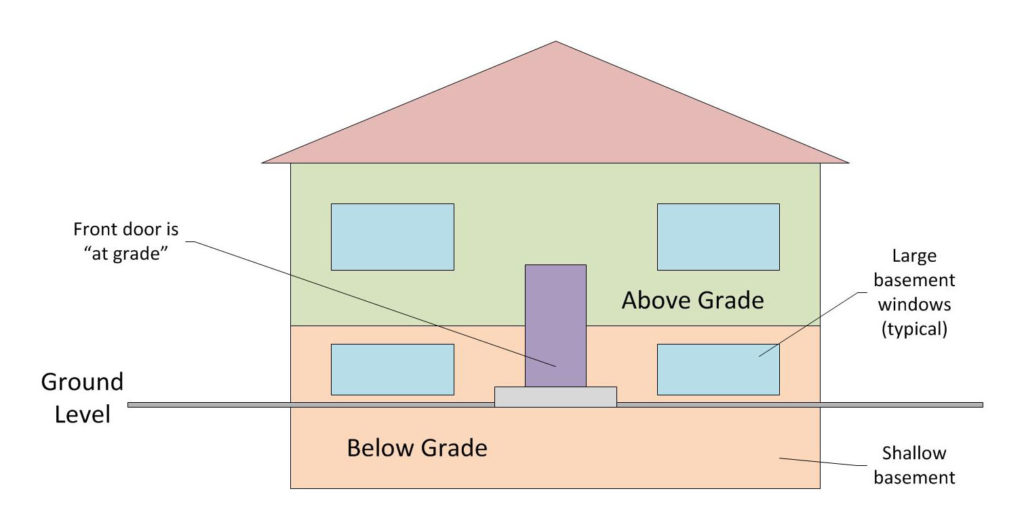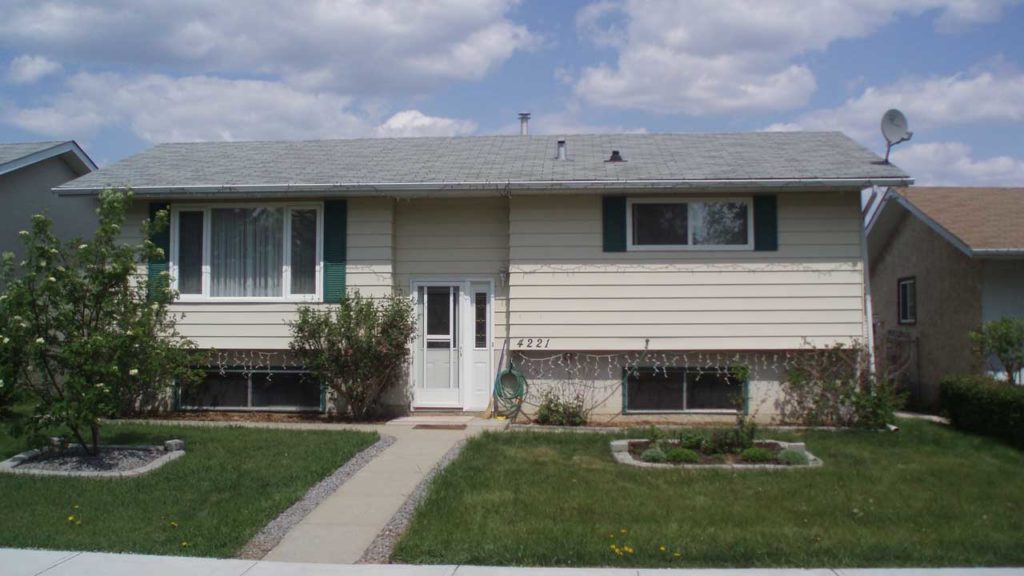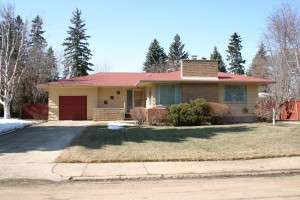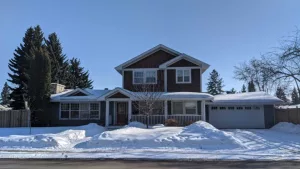What is a bilevel house?
A bilevel (or bi-level) house is a one-story house much like a raised bungalow, but spun around 180 degress. The front door opens onto a landing that leads both up stairs to the main floor or down stairs to the basement. The entrance of a bilevel is at grade (right at ground level) and the back door is above grade and leads to a high landing with steps or a rear deck. A bilevel is just one type of Edmonton home. Others include 1.5 story houses, 2-story houses, bungalows and semi-bungalows.
Real Estate Agent Explains Bilevel House
To have a true bilevel house you need to fulfill three criteria, these end up dictating the way the exterior is presented:

- The number of stairs going up and number of stairs going down need to be roughly equal. This means that the house must be raised out of the ground a significant amount to make it a bilevel.
- You come in through the front door at ground level. That is you don’t climb more than one step to get into the front door. When you enter the house, you are arrive at a landing with an immediate choice to go up the stairs to the living area or down the stairs into the basement.
- A bilevel has only one floor above grade.

The general format of a bilevel is identical to a raised bungalow (a bungalow that is set higher out of the ground than normal) but also the orientation must be flipped around 180 degrees. That way what you would consider the back door in a bungalow is now the front door.
Bilevels are not very common in Edmonton. For example: of the all the houses sold in 2018, only 6.4% were bilevel homes.
An advantage to having a more shallow basement is if the water table is high, the slab may remain drier than if the basement were deeper. A bilevel may not be suitable in some colder climates because a basement should extend below the frost line and these houses could experience more in the way of frost heaving.

Notice how in the above photo that the front entry is at street level and how the basement windows are fully above grade.
Why Does It Matter?
Bilevels were quite popular in the 1970s and they are still pretty desirable homes in Edmonton today. They have the advantages that bungalows have in a lot of respects, but they are also higher up out of the ground which means that there can be taller windows in the basement. Big windows mean more sunlight – making a basement feel much less like a basement.
Bilevels can also have an informal feel because compared to a bungalow, the back door has become the front. When you enter a bilevel you are typically greeted by the staircase that goes up to the main level and down to the basement.
Another advantage of a bilevel is that the back door is almost always quite a bit above grade – the stairs having been located instead at the front. With the back door so much higher up, a high rear deck is possible, which can be a very desirable feature.


Alan, thank you for the clear, concise definition. I wish you defined the split level as well; and showed the difference between it and the bi level. Reading through the foggy, inconsistent, even outright contradictory, definitions is dizzying lol. I can’t believe that, as it seems, no uniform definitions have been settled upon by some association of the developers and/or real estate agents. Thank you again.